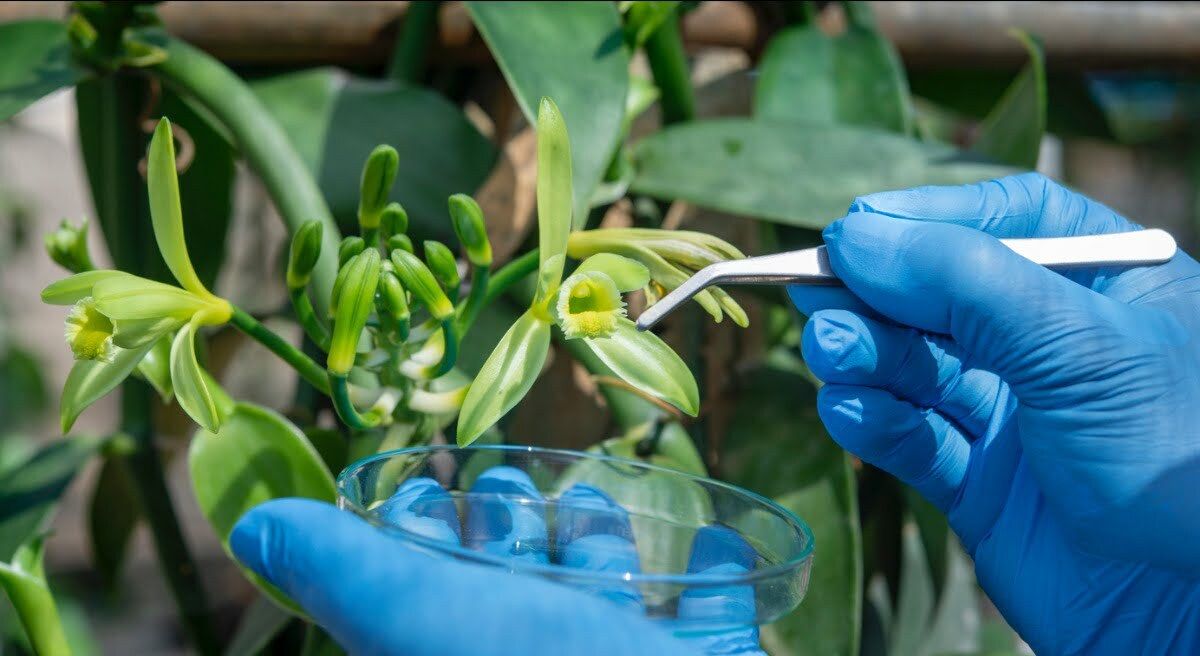Replicating Today’s Palate for Tomorrow’s Changed World
“What are our goals for synthetic replication of flavors and aromas? Do we seek exact cloning of a naturally-occurring chemical? Or is it the creation of new compounds that deliver similar perception properties as their naturally-occurring original?”
— Brad Meyer, Director of Automation
Brad Meyer, Director of Automation, shares his expert commentary on the practice of leveraging bioengineered molecules for taste and smell.
We are bombarded with scents every day, be it the smell of coffee, a colleague’s perfume, or the fragrance of the flowering plants outside. While we take these aromas for granted today, a yearning for the sights, sounds, smells, and tastes from our past may soon be upon us. But what becomes of these scents when a changing climate across the globe impacts the growth of coffee beans for coffee, ylang-ylang plants for perfume manufacture, or the simple growth cycle of the citrus fruits we eat and use in the manufacture of flavors and fragrances?
As climate change impacts all areas of the globe, some of our most precious flavors and spices may be at risk of extinction; think Madagascan vanilla or Kashmirian saffron. Among other things, a changing climate increases the risk of plant-borne diseases, growth habitat loss, and a decrease in pollinators or other symbiotic animals in the plant life cycle, all of which will limit or halt the prevalence of these plants and smells in our everyday life.
To address these needs, the flavor and fragrance industry is seeing an increasing number of its members step up their focus on bioengineered molecules for taste and smell. The goal of these bioengineered molecules is to recapitulate a natural compound’s qualities by converting separate, more renewable, and accessible chemicals to ones that mirror the natural chemical’s properties through chemical manipulations. The impact that this new technique has on preserving the flavors of a fragile ecosystem cannot be overstated.
Last year, the British molecular biologist and SynthBioBeta founder John Cumbers illustrated these points in a fantastic think piece. He points out that it is not just enough to recreate a scent; it must meet many endpoints, including being economical, environmentally responsible, and safe for long-term use across all of its use cases. But what are our goals for synthetic replication of flavors and aromas? Do we seek exact cloning of a naturally-occurring chemical or the creation of new compounds that deliver similar perception properties as their naturally-occurring original yet differ in other properties? Likely we will see both approaches employed across the spectrum of synthetic chemical synthesis.
Conagen’s success with synthetic musk and Ginkgo Bioworks’ success with the fermentation of novel synthetic lactones for fragrance and flavoring show that a combination of approaches makes sense. Advances in biology, enzymology, laboratory robotics, and computational biology are bridging the gaps between natural and synthetic compounds. Discoveries in chemical and biological assays can help formulators recreate the final experiences of our world’s flavors, textures, and scents that will last us well after using natural resources becomes irresponsible.
Not only do these new technologies help our taste and aroma palates for tomorrow’s world, but they also have anthropological value. In 2019, the art exhibit “Resurrecting the Sublime” was displayed in multiple museums worldwide and featured the fresh scent of a long-extinct plant, Hibiscadelphus wilderianus. To reproduce the scents of the past, scientists at Gingko combined molecular biology technologies with the art of advanced fermentation techniques to recreate the distinct biological mechanisms that created the unique scent of the Hibiscadelphus.
Yet, bioengineering a molecule takes more than a test tube, a catalyst, and a few chemicals. A deep understanding of the original nature of natural compounds’ properties, active groups, stability, and phases is vital in the process. Furthermore, a chemical and biochemical understanding of the natural molecule is essential. But while GC-MS can help us understand the components to synthesize, it is the novel biochemical assays on discrete taste and olfactory receptors that can show how natural chemicals signal the brain and trigger our perceptions of taste and smell. After all, synthetic flavor and fragrances must truly mimic their natural counterparts if they are to be accepted and widely adopted.
This new ability to leverage biology to ensure that novel synthetic chemicals signal perception in the same way as natural compounds, combined with rapidly-evolving understandings of precursor chemicals and microbes, are the foundations of how synthetic biochemistry can build upon, preserve, and even resurrect the flavors and scents of our world in the face of a changing environment.



